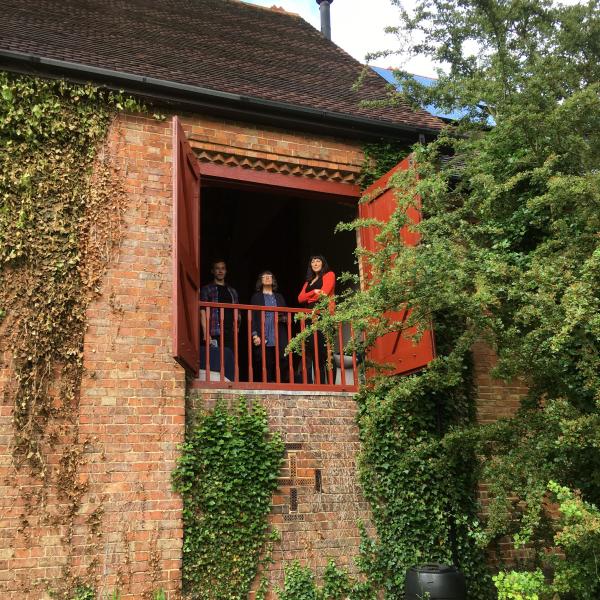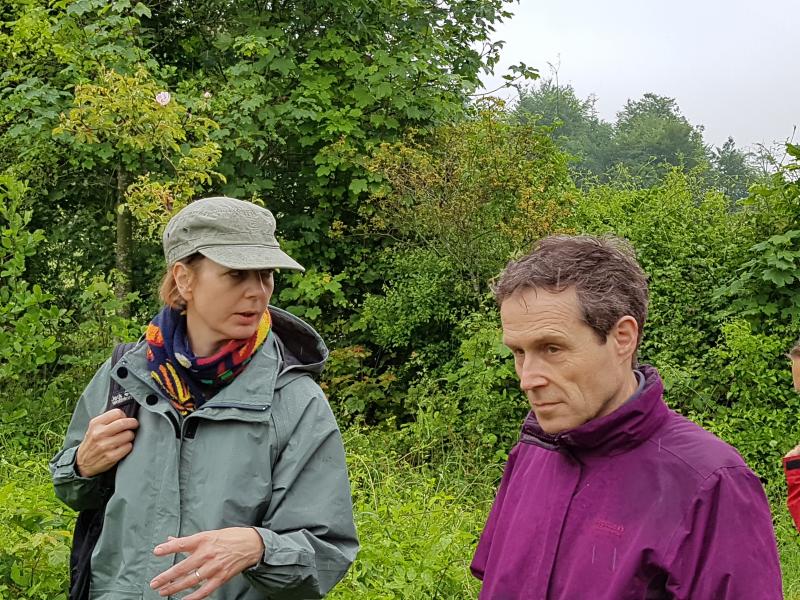Joanna Watson22 Aug 2019
In early June the Experiments team held a two-day immersion at the Quadrangle Trust in Kent in advance of a three week sprint to support Friends of Earth’s campaign to double tree cover in the UK. A small sprint team explored ideas about how we might re-imagine the greenbelt.
Paul Preece, a member of our Supporter Care team and coordinator of local group, Harwich Friends of the Earth, talks to Joanna Watson about his experience of the sprint process and shares his reflections on the importance of trees for connecting us with each other and the wider environment.
What did you enjoy most about the process?
Visiting the Quadrangle in the depths of Kent was a great choice as it gave us a perfect snapshot of the many uses of the green belt and space to think outside the confines of Friends of the Earth’s normal campaign style.
Innovation can only work when you can look at issues without preconceived ideas and challenge the status quo. I enjoyed being able to use my own experience to come up with ideas that were radically different.
I also loved the tight focus on ‘re-imagining the green belt’, looking at how this natural “planning moat” that stops towns and cities from attacking each other can take on an entirely new role to help protect them from the threat of climate change.
What did you learn?
It was a wonderful experience and the location was so perfect. I learned a lot more about trees – I hadn’t really experienced the diversity of forest, natural woodland and farming before and it taught me that woodland is a lot more than just the services that trees provide. A new way of questioning.
As a local group coordinator it has made me think about how to engage with my own area. How to open doors, talk to farmers, landowners, and the local council about opening-up land for experimenting. The importance of doing things locally.
Did anything surprise you?
Some of the locations where trees have been planted didn’t seem particularly loved. I’ve had to deal with tree loss and people don’t seem to think about it until they’re gone. The sprint made it crystal clear how important planting trees is for the future. We are losing our tree fabric through changing land use and development and somehow we need to capture people’s imagination about future loss.
What did you mean by ‘unloved’?
It’s about connection. Trees take years to grow and as they grow they can unite a community and create a sense of belonging. When I was walking in Kent I felt there needs to be a much greater sense of pride and ownership of our wooded spaces everywhere.
In Milton Keynes, as part of the new town movement, 30 years ago, school children were encouraged to plant trees. It’s a wonderful vision and could help bring back the sense of ownership of our planet’s future. As the children mature into adulthood, they will pass that on to their children too.
So how does this sense of connection happen?
I’ve seen it in action. In my Harwich campaign, there was a nature walk called The Hangings which was used but slightly unloved until a developer destroyed over 100 trees. What they did was illegal and it ignited local passion. It became a massive action, people became involved by the threat of more tree loss, protected the remaining trees and they still care about the Hangings today.
You have to plant the vision of the future that pulls people in
Yes. It’s about having a stake in our future. I think of it as the Climate Forest Jigsaw. Doubling tree cover is a jigsaw, not a completed painting, where all the pieces fit together – not just tree planting, but agroforestry or silvopasture, rewilding or community woodland regeneration.
Everyone owns a piece of this jigsaw and can feel connected. No matter how small their individual effort, it has the potential to show you care and are taking action. You can think- this is my legacy to people 30-40 years ahead. It’s the emotional impact – small communities do their bit and the jigsaw turns into a giant big new climate map of the forest connecting people together.
You’re talking about using the motivation of imagining future loss as a way of engaging support for action
I live in Constable country and trees were an integral part of his paintings. Just imagine those familiar scenes without trees. Could artists re-imagine the future to help us? It was great walking in the Kent woods with artist Fiona Macdonald and trying to see the value of connecting with the other woodland species through her eyes.
I am exploring how I might engage with local artists to paint the future where there are more trees to fill in the gaps, not fewer and then appreciate that future as one worth protecting.
How has this experience impacted on your work?
Our trees campaign has generated a lot of passionate responses from our supporters. As someone who spends every day connecting with our supporters and responding to their queries, the sprint mindset has changed my way of thinking about how I talk to them. It’s told me people want to know much more about trees and the practicalities and has enabled me to go back to supporters and reinforce other messages - about land, access, money, eating less meat, trees as climate sinks. It provides a more enriching dialogue for us both and motivates them to get active and give us more feedback about what works.
It has prompted me to think more creatively about potential partners amongst our supporters. For example, some dedicated Tree Wardens in London have reached out to us because austerity has hit councils hard and they feel their voice is being lost. We can share campaigning skills to harness their skills and enthusiasm and give them a much louder voice.
What were your expectations of the sprint and were they met?
You don’t know what to expect because it starts with such an open brief – that’s the joy of it.
You have talked about what you have learned and what inspired you. Are there things about the sprint process that worked less well for you?
I would have liked more reflective time and more time working together as a group once we came back together as part of the sprint. Obviously, it puts pressure on my team back at the office but maybe if the sprint had spaced out the three core days over five, it would have given us more opportunity to flesh out our ideas.
Team dynamics were good. We were really engaged as a team after we’d been fired up in Kent and our ideas were inter-connected, but in order to develop individual ideas, we broke apart. So when we pitched these at the hypothesis stage and presented to the Trees team, we didn’t tell the story as a narrative, missing the context, so the ideas seemed to be competitive rather than mutually dependent.
I would have loved to have had an inspirational storyteller show us how to present the conceptual richness and storyline of our ideas to help influence a future we can only imagine.
What’s your conclusion?
I’m keen for lots more staff to take part in innovation sprints. You learn a lot and it helps you come away thinking differently about a lot of things.
The times are challenging. We need to be bold.
Please share your ideas ideas about how to re-imagine the greenbelt or check out Friends of the Earth's work on doubling tree cover.



